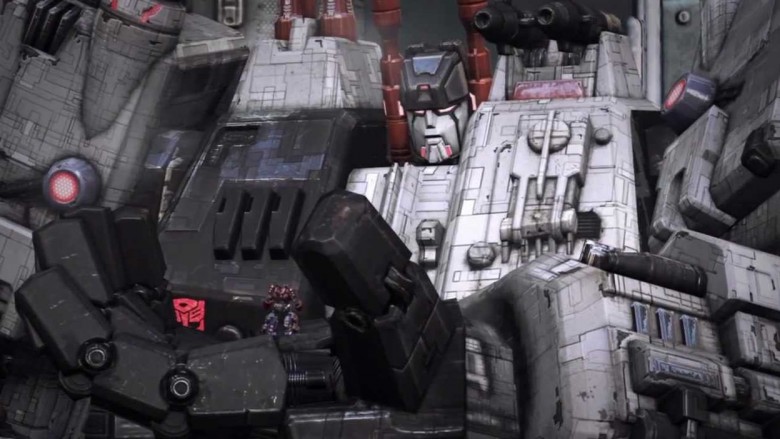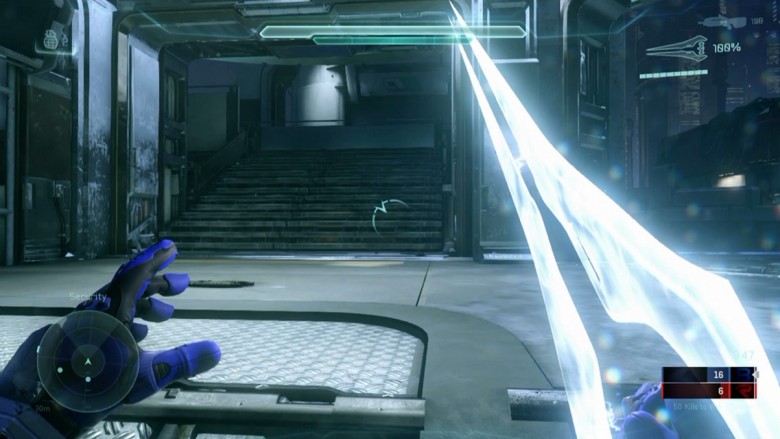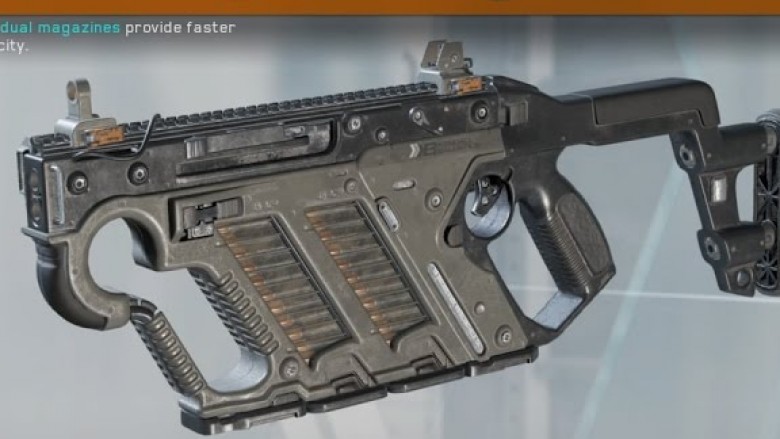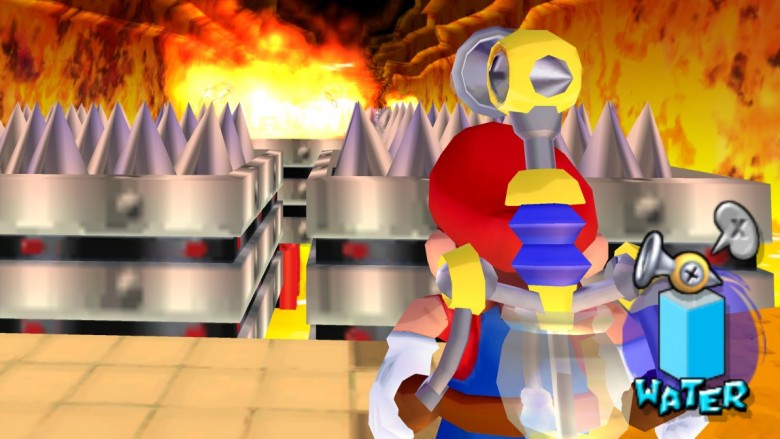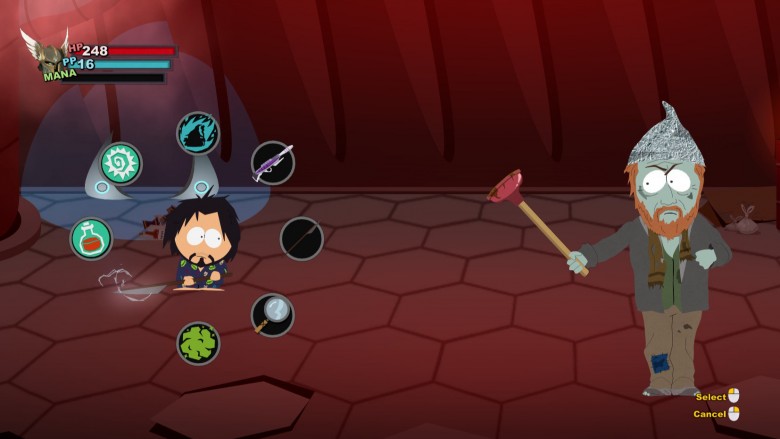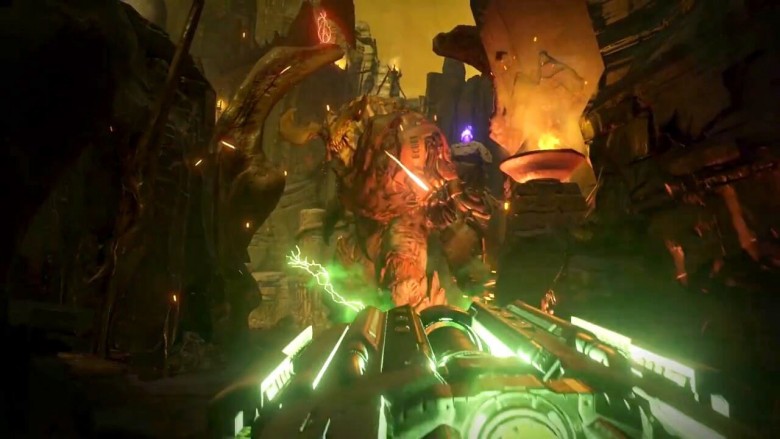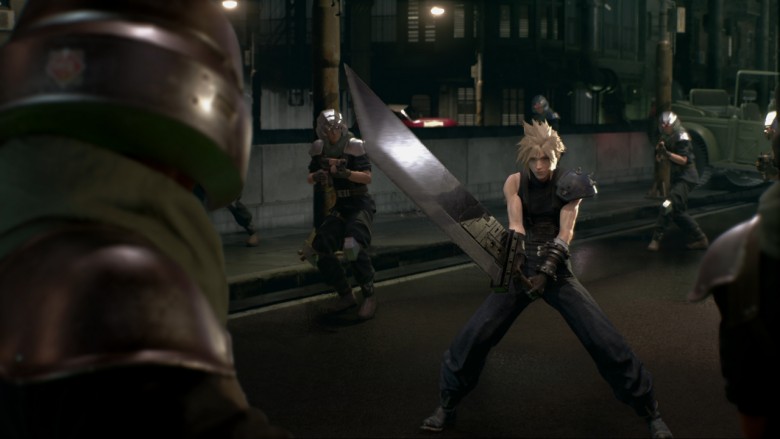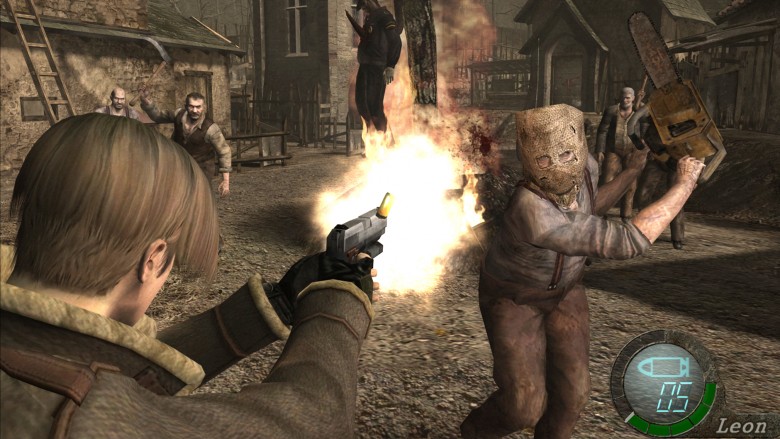How Much Video Game Weapons Would Cost In Real Life
We may receive a commission on purchases made from links.
Ever wonder how much it would cost to acquire a real-life version of a devastating weapon from your favorite video game? We have. Here are a few of our guesstimations. Spoiler alert: We aren't mathematicians, so we might be way off. Also, these are video game weapons we're talking about. They aren't real by definition, but they're imaginable, so we're giving it a shot because it's fun to think about having these video game weapons in real life.
Metroplex from Transformers
Metroplex is a city-sized Transformer — an incomprehensibly massive sentient robot in disguise that runs on an imaginary power source called Energon. We need to develop self-aware AI, find an energy source comparable to Energon, and physically build the walking, talking mobile city/combat base.
Building the structure is the simplest to imagine, so let's start there. The real estate site Movoto did an in-depth calculation of the cost of Metroplex's structure based on the dimensions of the action figures. According to its estimations, based on an idealistic methodology which doesn't appear to include labor or shipping costs for the construction materials, Metroplex would require an 11,091 square-foot property and would cost a mere $6,214,580 to construct, guns included. But that's just for the property value. Taking construction costs into account significantly increases the cost.
Metroplex is either 192 feet tall (Movoto's calculation based on the relative heights of the toys), 698 feet tall according to one old Transformers booklet, or 2,600 feet tall based on a different Transformers comic. If we take the largest one, the tallest building in the world is the Burj Khalifa at 2,700 feet. That cost $1.5 billion to build, and it just goes straight up and down! Let's be perhaps stupidly optimistic (and jingoistic) and presume that we will have found the proverbial AI singularity once AI reaches its projected market value of $8.3 trillion in the U.S. (The projected date for this to happen is 2035.) It's even very remotely possible that billionaire donations will usher in the dawn of true AI a little sooner.
That still leaves the insurmountable fictitious energy source issue, not to mention the size discrepancies. If you're a billionaire venture capitalist, plan to go broke trying to fund this beast.
Halo energy sword
The geniuses at The Game Theorists contend a slight difference between the functionality of a lightsaber and that of a Type 1 Energy Weapon/Sword (commonly known as an energy sword in Halo), aside from the obvious design-related differences. The Game Theorists convincingly speculate that the energy blades of lightsabers and energy swords is essentially plasma — the stuff lightning's made out of. A lightsaber holds its shape due to the wielder's Force sensitivity, while energy swords operate by shaping superheated plasma with magnetic fields.
Men at Arms: Reforged created a metal replica of the energy sword, a little cumbersome on account of the weight of the blade but a unique project, nonetheless. In addition, the information superhighway is littered with guides for making your own energy sword replica out of acrylic, plastics, LEDs, and rubber bands, with equipment costs usually kept under a few hundred bucks.
So, how much would it cost to actually build one of these things? We don't know, but it's probably more than even Doom's BFG, since we would need a way to isolate the plasma to retain its shape. So, let's say several quintillions in R&D-related expenditures. That's ... a lot more dollars than are presently in circulation. With that kind of money, it might be better to invest in alternative energy sources or give everyone on Earth clean water to drink. If you're into those humanitarian sorts of things, that is.
The Karma-45 and Volk from COD Infinite Warfare
When Call of Duty went to space with COD: Infinite Warfare, Infinity Ward got creative with its weaponry. The new sci-fi energy weapons have reinvigorated the series' online matches — or, rather, they would have reinvigorated them, if not for Titanfall 2, Battlefield 1, and Overwatch. Freed from the artificial restrictions of historical accuracy, the space-combat weapons range from realistic overhauls of existing designs (such as the Karma-45, a full-auto ballistic firearm) to the fantastic (like the Volk, a fully automatic pulse rifle with energy-based ammo — a freakin' ray gun!) among other awesome permutations of destructive power.
The Karma-45 looks a lot like a heavily modified KRISS Vector, the stock for which currently sells for $1,495. The major distinguishing feature of the Karma-45 is the twin barrel design. Barrels for the KRISS Vector sell for $255 each, two for $510. So we're at roughly $2,000. Given that one stock is built for one barrel, a second stock may be needed for its components. That brings us to $3,500. Fully equipped with thermal optics ($5,000), the Karma-45 would be around $8,500 for the parts alone — not cheap for a submachine gun. That's not counting the cost of labor required for making one double-barreled stock out of two, though we suppose you could just duct-tape 'em together Ellen Ripley-style.
What would it cost to build a fully automatic ray gun like the Volk? So-called "hard science fiction" sites like the brilliant — if a little bonkers — Atomic Rockets, can tell you how such a fantasy death-bringing device might (or might not) theoretically work, but, as we learned from the BFG 9000, the cost of such a device is presently incalculable. In a world where funding for annihilation weapons development only appears to be limitless (seriously, do we really need another instrument of death?), whoever embarks on this research will want to knock out the Volk and the BFG 9000 in one all-encompassing, nightmarish research project.
The FLUDD from Super Mario Sunshine
Science people, feel free to laugh at and/or correct our feeble attempts at physics-based speculation. We aren't physicists. We're just gamers with hypothetically infinite funds looking to buy a fully functional Flash Liquidizer Ultra Dousing Device (FLUDD).
Devoted Nintendo fans have constructed FLUDD replicas for approximately $40. For the purpose of cosplay, they're great. For actually lifting you up into the air by water pressure alone, as the FLUDD does in Super Mario Sunshine, replicas haven't a chance. The FLUDD is essentially a backpack-sized version of a fire engine, with a fill valve, discharge port, and suction port. It's a fire-engine jetpack. In the real world, a recreational water-powered jetpack costs approximately $6,500. There's a problem, though. These jetpacks need to be connected to a water source (e.g., a lake) and a 180-horsepower personal watercraft in order to function — and they don't even come with a combat-ready hose. Like many of Nintendo's imaginary inventions, the FLUDD is impractical, as the genius at Jeremy's Physics Project explains. For one thing, in the real world, the amount of water needed to lift a person into the air can't be carried around in a backpack.
Then there's the problem of refilling the thing. Mario can stand in a pool and refill the fishbowl-looking tank on his back pretty quickly. But how? What's pulling the water in? Is there a motor? If there's a motor, what does it use for fuel? Certainly not gasoline. Our best guess is that it uses some sort of hydrogen power cell, whose byproduct — water — could filter directly into the tank. This would explain the mist that the FLUDD sprays when it runs out of water. Hydrogen fuel cells were always ridiculously expensive until recent years. Price has recently come down to around $61 per kilowatt of energy produced. And that price might continue to drop as automakers invest in the burgeoning hydrogen-powered car market.
Then there's the question of water weight. (Sorry, whales.) A gallon of water weighs a little over 8 pounds. Fire engines can gush almost 1,000 gallons of water per minute. Meanwhile, according to the aforementioned Jeremy's calculations, the FLUDD would need to generate 6.7 lbs of pressure per square inch to keep Mario "flying" at a steady height. You're using a ton of water — several tons, actually — so if you do manage to build or buy one, you'll break your back trying to carry the thing around. It's probably worth it, though.
Various weapons from South Park: Stick of Truth
In South Park: The Stick of Truth, a dodgeball is a formidable ranged weapon. Dealing 25-52 in damage, with a double-hard hit against armor and potential to bounce to a random enemy, the dodgeball is tops in state-of-the-art playground defense. You can get a standard playground dodgeball for about $10 on Amazon — if you don't mind feeding the machine. Next we have the Rod of Waste, which deals 182-210 (x2) with a +50 Gross debuff. Difficult to find in South Park: Stick of Truth (hobos wield them), the Rod of Waste is commonplace in our realm. It can be had for $8 at Home Depot. It can be dirtied for free.
Finally, courtesy of our friends up north, a high-quality, combat-ready Canadian halberd would be useful down the line, as the odds become stacked against you. Dealing a whopping 892-1,200 (x2) in damage, a high-end Canadian halberd costs $150 to $300 in the real world, although bargains are available. For one that has been tested by fearsome warriors on the tundra of battle, be prepared to pay upward of $500. If you want it signed by the mightiest of all — the Great One — you had better have $1,700 or so that you're willing to part with. And even then you'll just be getting the cleaving end of the stick.
Various BFG models from the Doom series
Introduced in the first Doom, the BFG 9000 clears rooms of Martian demons in one huge blast. We won't print what the letters actually stand for, but you can figure it out. The gun has followed one of two major designs: that of the BFG from Doom and that of the BFG from Quake II. Internet wizards have had many years to divine the mysteries of each. Doom's BFG 9000 first shoots a cone of blinding, damage-dealing radiation, followed by a glob of superheated plasma, whereas Quake II's BFG 10K emits a spheroid glob of superheated plasma that shoots green lightning bolts at any life-form it gets near — excluding the shooter, thankfully.
According to the geniuses at ShoddyCast (profanity galore, be warned), the BFG would need to be capable of producing 7 gigajoules of energy in a single blast, "which is several times the total amount of energy your heart will output for your entire life." The math covers the logistics of the latest version of the BFG 9000, which behaves like the BFG 10K from Quake II.
Nowadays, plasma rifles probably aren't outside the realm of possibility. They're close to reality, as researchers at the University of Missouri have shown with their electromagnetic railgun. (Granted, the blast created by such a "gun" is harmless, developed as part of a search for a viable energy source, but it's a baby step in the direction of plasma rifles.)
That's all well and good, but what kind of a dent would one of these handheld horrors leave in your wallet? Considering the fact that plasma guns have yet to be weaponized — whether that's even possible — you'd need several times the $500 billion (ish) that the U.S. Department of Defense spends on weapons research and development annually, just to get the technology up to Satan-'sploding snuff. Given that we need to build this thing in such a way that it doesn't melt the trigger-puller's face off or generate catastrophically intense gravitational waves, you're looking at one serious bill. You'd be better off using your trillions to invest in finding another place to build a space outpost. Clearly, the Dark Lord has staked his claim on Mars.
Buster Sword from Final Fantasy VII
From tip to handle, it's approximately 6 feet long with a single-edged large blade approximately 12 inches wide. Life-size replicas sell for $1,399 on Etsy. However, the replica comes with the following caveat: "While this item is sharp, please be aware that it is basically useless as an actual sword." So it's great for cosplay, but you wouldn't bring it with you into actual battle. In other words, it's a replica — as advertised — and nothing more.
Enter Man At Arms: Reforged, a YouTube show in which a real-life blacksmith makes real-life versions of fire-forged melee video game weapons. Comprised of the stuff they use to make aircrafts and M-16 rifles for the outside body of the blade and a lot of other metals, the Buster Sword for this episode weighed in somewhere between 75 and 80 lbs. The total cost of the materials isn't listed in the video. That said, although their Buster Sword is undeniably more awesome than anything we could make, its unwieldy weight and the blade's aluminum body ultimately disqualify it. Would Cloud use aluminum? Doubt it.
So we're back to square one. If the Buster Sword resembles anything, it's a huge falchion. The retail price of a falchion is usually less than $500 — like this one for $195. Bear in mind, that's for a tempered high-carbon steel blade. Ideally, you want your blade to be lightweight and maneuverable, since you're going to be lugging it around on your shoulder for either 40 hours or until your back gives out. If you're looking for something a bit more flashy, a typical custom longsword can run upward of $1,500.
All in all, we should expect to pay Lamborghini prices for Cloud's beast of a longsword. Considering the artistry of the etchings and the importance of the sword being as lightweight as possible, we might want to get an opinion from the experts on lightweight longswords: the certified katana-makers of Japan. The standard price of an authentic tamahagane steel katana made in Japan and registered with the Agency of Cultural Affairs of Japan (thus proving its authenticity) and measuring 26” is $45,000. If you want your gigantic sword to be at all useful in battle, expect to pay at least what you would for a katana.
On the super-slim off-chance that the sword's weight isn't an issue for your superhuman biceps, its size and single-edged design will be, so we recommend equipping Luck Plus materia; you're gonna need it — or you could just get a katana.
The Beretta from Resident Evil 4
In Resident Evil 4, it costs a total of 141,000 pesetas to fully upgrade your Beretta M92FS handgun. That's 70,000 pesetas for max firepower, then 17,000 for max firing speed. Toss in 14,000 for max reload speed plus 40,000 to max out capacity. If 127 Spanish pesetas roughly equaled 1 US dollar when the game was released, then 141,000 Spanish pesetas was equal to about $1,100. Considering how, in real life, a Beretta 92F goes for around $700, you're looking at between $1,700 and $1,800 for a fully optimized Beretta M92FS.
Now, if you want to trick out your Beretta into a Samurai Edge, it'll cost you significantly more — but it can be done (sweet dreads and "cool guy" banter not included).
Sheep from the Worms series
Sheep give Worms its charm. They also give the worms themselves an edge on the field of battle. You see, the sheep aren't merely sheep. They're exploding sheep. They do serious damage when used in explosive (albeit Keanu-less) chain reactions.
A lamb costs between $500 and $600, depending on whether you're getting a ewe or a ram. And even though we're probably on enough watchlists already from researching this article, C-4 explosives don't seem to be all that expensive. We'll say C-4 is somewhere under $100 per pound.
So, let's say we're at $700. We still need to factor in the years of rigorous intensive cognitive behavioral therapy and electroconvulsive therapy that we'll need just so we can live with ourselves for obliterating one of the objectively cutest animals in existence. Sheep are adorable. What sort of a worm would think to butcher Assistant Mayor Bellweather with dynamite?
That's assuming the sheep are ordinary, sheep-sized sheep. How big are the worms and how big are the sheep? We don't know. If the worms are the size of earthworms, then the cost of making an exploding sheep must include the price of a shrink-ray and the bomb can be little more than a standard firecracker. But if the worms are enormous and the sheep are normal sized sheep — then we're going to have nightmares forever.
Various weapons from Broforce
Based on action movie heroes, the Bros of Broforce wield a wide variety of firepower on the battlefield. The prices of their video game weapons range from reasonably affordable to impossibly expensive.
In the affordable category, Bro Lee's nunchaku can be yours for a mere $20. Next, we have Broheart's longsword (a Celtic claymore) which would cost between $75 and $200 — unless you want a custom-made sword, in which case, be prepared to spend more.
In the outlandishly expensive range, Tank Bro calls upon a sentient, emotive tank for assistance. If we took a shot in the dark and guessed that just developing AI would cost $8.3 trillion, you'd still have to add $12.6 million for the state-of-the-art tank technology. Then there's Time Bro's device which slows down the passage of time. We doubt a human mind will be capable of achieving time-travel, thus we'll have to hope an AI can. So let's say $8.3 trillion plus x, where x equals whatever amount of money the AI itself deems appropriate to spend on such an absurd project. AI knows best.
Now take that equation and add y, with y representing the total cost in dollars of the inevitable humans versus AI war that would need to be fought and won in order to take said time-travel device from the robot horde, and multiply the whole thing (8.3 trillion + x + y) by z, the number of instances that the aforementioned series of events must recur for the humans to not only win the war against its own creations but also to escape any and all time paradoxes created by the time-jumping robot horde. Finally, multiply that total value by the number of times you need to spawn the tank, to allow for human error. Cha-ching.

